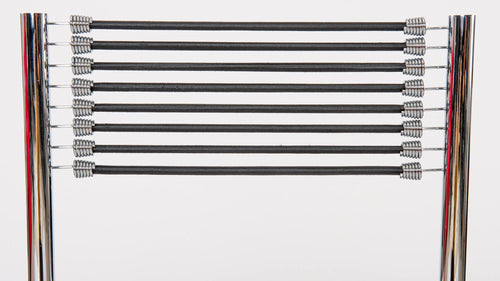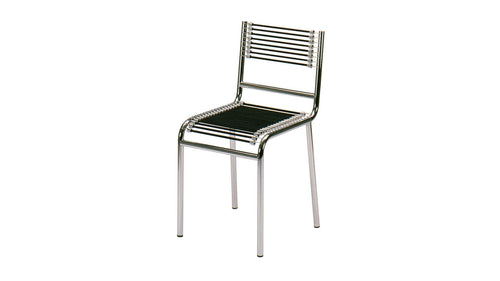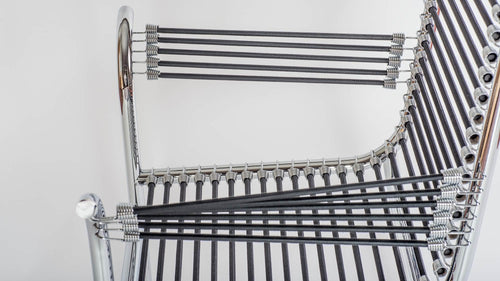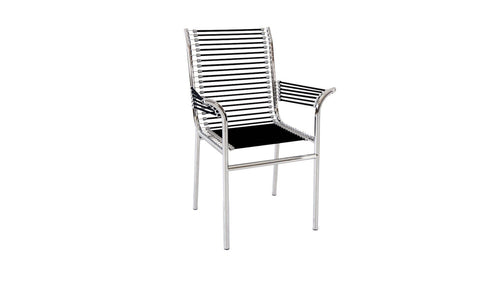Renè Herbst
R. Herbst
(1891-1982)
They call me the man of steel, but they don’t know that steel is the easiest material to bend. French born but trained in London, René Herbst worked in many architecture studios in London and Frankfurt, after study tours which also brought him to visit Russia and Italy. In his early works, the influence of the Arts and Crafts and Jugendstil movements is clearly notable. Together with Le Corbusier and Eileen Gray, among others, he founded the Union des Artistes Modernes in Paris in 1929, as a reaction to the decorative excesses of the dominant Art Deco style. Herbst was a precursor in the use of industrial metals, and manufactured his furniture in the factory he himself founded. The chair designed by Herbst and presented at the 1929 Salon d’Automne in Paris became popular: tubular steel structure, seat and back in elastic strings, normally used for holding packages on bicycles. In addition to architecture and design, Herbst also worked on shop windows and lighting displays. Captivated by the “modern world”, he was firmly convinced that bringing art “to the street” was the best way to bring together the cities of the 20th century.
They call me the man of steel, but they don’t know that steel is the easiest material to bend. French born but trained in London, René Herbst worked in many architecture studios in London and Frankfurt, after study tours which also brought him to visit Russia and Italy. In his early works, the influence of the Arts and Crafts and Jugendstil movements is clearly notable. Together with Le Corbusier and Eileen Gray, among others, he founded the Union des Artistes Modernes in Paris in 1929, as a reaction to the decorative excesses of the dominant Art Deco style. Herbst was a precursor in the use of industrial metals, and manufactured his furniture in the factory he himself founded. The chair designed by Herbst and presented at the 1929 Salon d’Automne in Paris became popular: tubular steel structure, seat and back in elastic strings, normally used for holding packages on bicycles. In addition to architecture and design, Herbst also worked on shop windows and lighting displays. Captivated by the “modern world”, he was firmly convinced that bringing art “to the street” was the best way to bring together the cities of the 20th century.




